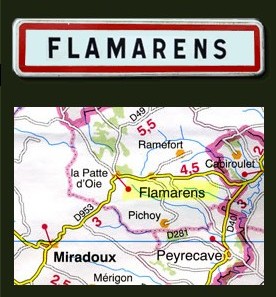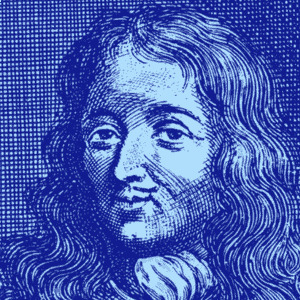
 Chateau Flamarens is located in the village of the same name, opposite the church. Constructed upon a high terrace, it affords a panoramic view of the surrounding countryside. The castle is situated between Saint Antoine-sur-Arrats and Miradoux along the Via Podiensis, the pilgrimage route that leads to Santiago del Compostello.
Chateau Flamarens is located in the village of the same name, opposite the church. Constructed upon a high terrace, it affords a panoramic view of the surrounding countryside. The castle is situated between Saint Antoine-sur-Arrats and Miradoux along the Via Podiensis, the pilgrimage route that leads to Santiago del Compostello.
The castrum, or fortified town, of Flamarens is mentioned as early as the thirteenth century, but it wasn’t until the fifteenth century that the castle we see today was constructed. It was at that time that the Grossoles family took up residence within its walls. A building contract concluded between Jean de Grossoles and Jean Caznove, a stone mason from Limousin province, on the 5th of February 1469, stipulated that the castle was to be built over a period of two years for a sum of “241 gold crowns, 50 measures of wheat, 21 barrels of red wine ‘good, pure and natural’, 5 barrels of cheap local wine, 7 pigs aged 2 years et 2 cows in satisfactory condition”…
The castle probably reached its apogee in the eighteenth century. In fact, it was said of the castle in Gascon: Lo castèt de Falmarens, bèt dehore, bèt deguéns (“the chateau of Flamarens, beautiful outside and inside”).
 Unfortunately, the castle was ravaged by fire and pillage in 1943.
Unfortunately, the castle was ravaged by fire and pillage in 1943.
“There is very little left of the interior décor. But, enough for one to get an idea of the quality: from the original décor, for example, the audacious hand-basket arches of the chimneys in the pantry and kitchen, the inlaid arches over the communicating doors, the molded beams (…)
The delicate plasterboards of the ceilings, the mantels of the marble fireplaces, a fountain’s niche, along with the Hungarian parquet floors and the jig-sawed wall panels, were so many eighteenth century improvements from which few rooms escaped.” Jacques Gardelle.
The castle was at that time the favorite residence of the marquise Marie-Françoise de Flamarens, a relative of Madame de Sévigné.
In the twentieth century, this site was a source of inspiration for one of the author Pierre Benoît’s last novels, entitled Flamarens.
In order to imagine the original castle, one must follow the advice of J.H. Ducos and “ignore a small old fort to which the new dwelling has attached itself (…) [Although] the original plan has been complicated by the addition of a new structure and this protrusion at the old base of the round and squared towers, its character has not been modified (…) It remains compact, squat, devoid of symmetry (…) one block, a massive parallelepiped in which we find the compactness of its thirteenth century ancestor, from whom it differs only by the addition of free-standing towers that are nonetheless so solidly anchored that they appear to be one with the main structure.”
Chateau Flamarens is still a private property and is today undergoing major renovation. The Castle is open to the public during the summer.
The Domain of Flamarens under the house of Grossoles
“The house of Grossoles, of which the seigneurs of Flamarens form one of the branches, is one of the most important and distinguished of the province of Guienne, where it held a number of posts and honorable ranks, ecclesiastic and military, and formed alliances with the most illustrious houses in the kingdom.” Father Anselme.
From this illustrious lineage, a few figures in particular stand out:
-Jean de Grossoles, the first occupant of Flamarens, was the one who began the construction of the castle.
-One century later, in 1545, it was Herrard de Grossoles, elected bishop of Condom in 1521, who commissioned the construction of the church of Flamarens. Known as a great builder, he was the one who oversaw the finishing of the cathedral of Condom as well as the construction of the cloister, not to mention numerous chapels in his diocese.
-In 1560, Renaud de Grossoles was seneschal of the territories of Marsan, then seneschal of Tursan and Gavaudan, governor of Mont-de-Marsan and chevalier of the King’s Order. King Henri III of France wrote a number of letters citing this distinction.
-In 1609, another Jean de Grossoles married Françoise d’Albret, a cousine of Henri IV. As a result of this alliance, the Flamarens branch became part of the Bourbon branch and the Grossoles of Flamarens received the authorization the show the arms of France on their family blazon.
-In 1641, Antoine Agesilas de Grossoles became famous as the lover of Mademoiselle de Montpensier.
-A few years later, François Gaston de Grossoles would owe his place in the history books to his exile to Spain for the crime of dueling…
This illustrious family disappeared in 1878 with the death of Jules Alexandre, Count of Flamarens, a member of the General Council of the Gers and a senator during the reign of Napoleon III. With no other heirs, the house of Grossoles died out after having produced a brilliant line of 15 seigneurs-marquis of Flamarens.
Not long ago, one could read this epitaph on the simple tombstone of Jules Alexandre:
To the first Grossoles of 1184, from the last two Grossoles of Flamarens, 1874.
